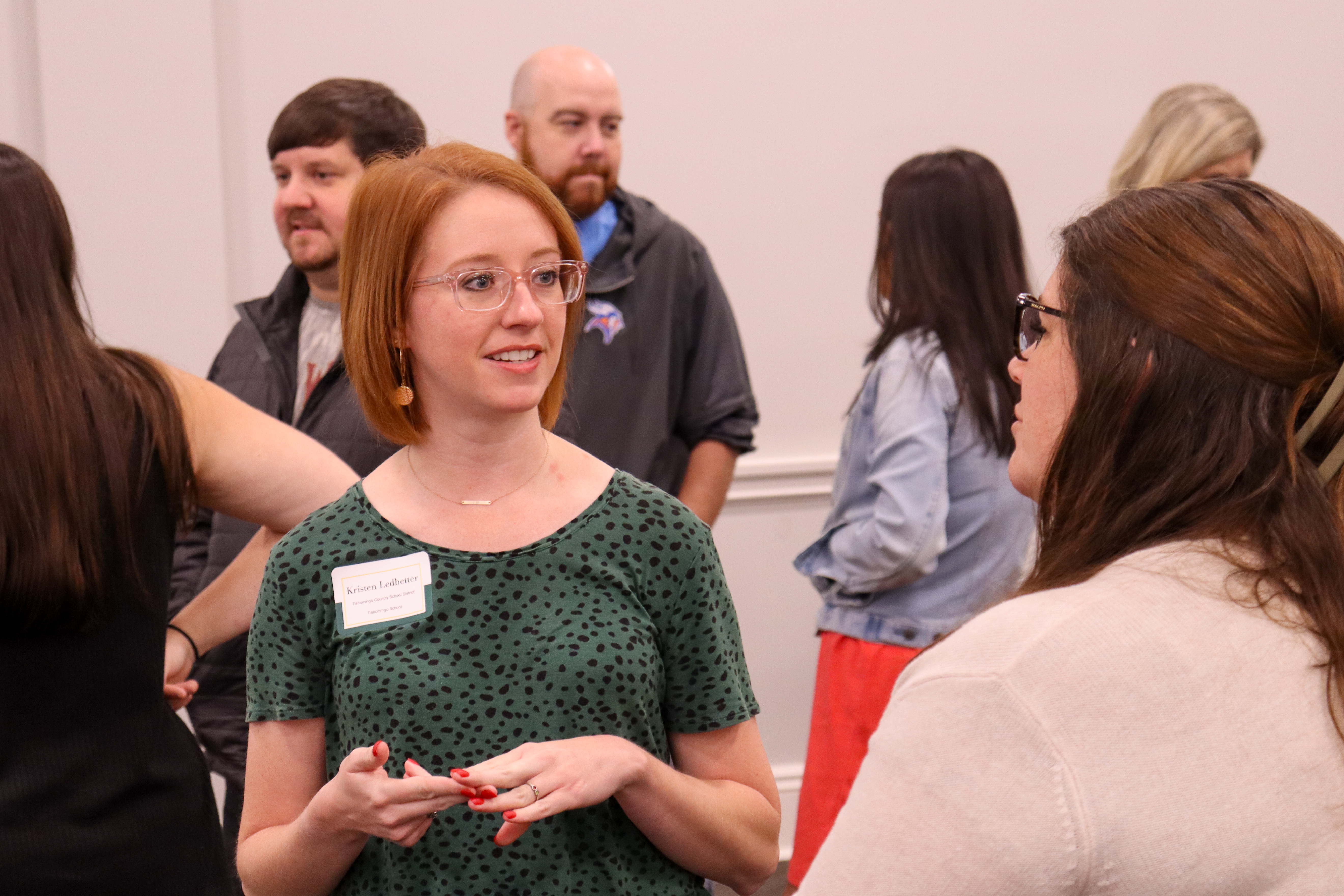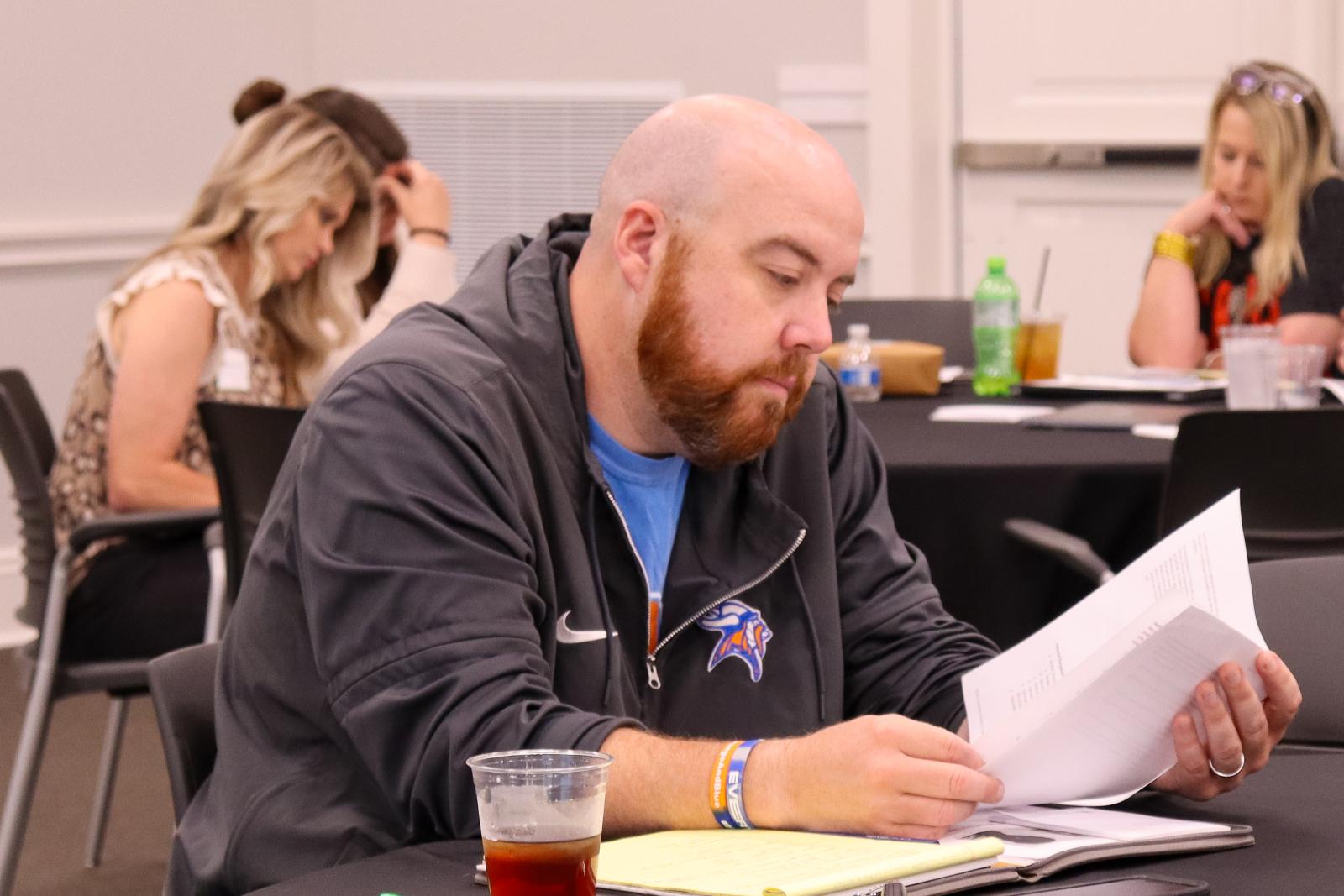Developing Thriving Learning Communities: How to increase joy and well-being in schools

What if we could lower anxiety, decrease depression, increase classroom engagement, enhance student cognitive endurance, decrease bullying, reduce coordination of substance abuse in unsupervised locations, and give students a chance to engage more deeply in relationships with students and educators?
This question was posed by Dr. Jon Eckert, Professor of Educational Leadership, to ten Mississippi school teams of teachers, administrators, and counselors this past weekend. The answer? By freeing students from their phones at school while focusing on other interventions that lead to thriving learning communities.
For the past year, the Baylor Center for School Leadership (BCSL) team including Dr. Bill Sterrett, Dr. Marilyn Rhames, Jill Anderson, and Sahira Kodra have worked with Baylor School of Education’s Associate Dean for Research, Dr. Grant Morgan in partnership with the University of Mississippi through a grant from the Office of National Drug Control Policy to design a plan to increase joy and well-being in schools through enhanced relationships and student engagement.
School teams from five districts will be putting interventions in place for the 2024-2025 school year. They plan to unleash joy to build flourishing communities by ensuring that each student is seen, known, and cared for by an adult and peer; increasing within and beyond the classroom; and highlighting positive community norms. Many of the schools hope to enhance these interventions by freeing students of the smartphone distraction.
“This work could not be more timely,” Eckert said. “Early on, we realized that no matter what we implemented, without addressing the pervasive issues caused by students near constant use of smartphones, not much else would matter.”
Jonathan Haidt uses a Polynesian saying to describe the situation in schools. He writes, “We are standing a whale fishing for minnows.” All our work on social emotional learning and mental health in middle and high schools is like fishing for minnows when the whale affecting mental health is the ubiquitous smartphone loaded with addictive social media.
According to the U.S. National Survey on Drug Use and Health, major depression among teens girls increased 135 percent since 2010, and boys increased 161 percent. Additionally, the percentage of U.S. anxiety prevalence in young adults ages 18 to 25 increased 161 percent since 2010.
Time with friends has dropped too. A recent study noted that people ages 15 to 24 spent about 150 minutes on average per day with friends in 2003. In 2019, that number had dropped to an average of about 40 minutes per day. (Kannan & Veazie, 2023).
The depression and anxiety increased dramatically between 2010 and 2015 as smartphones became widely used among children and teens.
Sarah Beth Byrd, a teacher at Ripley Middle School in Mississippi, feels like devices have hindered her children’s growth. She tells a story about a recent project in her classroom in which students were asked to design a game board and build characters that had to stand on their own.
“I watched them struggle for about 30 minutes,” Byrd said. “One of the students finally came up to me and said he couldn’t figure it out. Once I showed the students how to make a figure stand on its own, they were innovative, and started coming up with their own solutions.”
Karly Spires, a school counselor at Ripley Middle School, added that Byrd’s students gained confidence through the project and expressed so much joy through the innovation of building a game on their own.
“If someone has self-confidence that they can get themselves through hard times, their overall view of life will be happier. It’s a foundational life skill,” Spires said.
Byrd said she watched her students re-evaluate and saw how excited they were to play the board games they had created on their own.
“Next year, I will start with this project rather than ending on it because it built so much confidence in each of them.”
As Byrd and Spires know well, joy is not the freedom from struggle, joy is the fuel to struggle well, and learning is a productive struggle.
In a discussion about where joy is found in schools, Brandt Puckett, principal of South Pontotoc High School in Mississippi, said, “We need to do a better job of celebrating students’ growth and normalizing the struggles.”
Jim Matthews, a 19-year veteran teacher and principal of North Pontotoc Middle School in Mississippi, shared a story that brings him joy, but didn’t start out that way. “One of my students became pregnant and dropped out of high school as a freshman,” Matthew said. “A year and half later, she returned and was determined to finish high school. Now, she is working on her teacher certification and plans to work at the school she attended to help students like herself.”
These students have school leaders who lead for joy through truth and love. With a commitment to remove smartphones from their classrooms in the following school year, the hope is that each of the schools involved can cultivate thriving communities that will be a model for the rest of the country.
In a recent Washington Post article by Joanna Slater titled, “How a Connecticut Middle School Won the Battle Against Cellphones,” administrators noted surprising changes among students.
“Group vaping sessions where students would coordinate to meet in restrooms to smoke prohibited electronic cigarettes? Finished. Using AirDrop to share inappropriate photos during class? No more. Social-media-fueled arguments during school? Over.”
The intent of the grant is to help school teams reduce substance use and misuse. The BCSL has approached the work by focusing on what leads to joy and flourishing as improved mental health will lead to reduced reliance on substances. By June 2025, the teams will report the effect on their interventions which will hopefully be obvious in more joyful, thriving schools.
If you are interested in seeing research about cell phones use among adolescents, click here to visit the Anxious Generation website.
With confident humility and gritty optimism, the Baylor School of Education’s Center for School Leadership (BCSL) strives to be the most effective Christian leadership catalyst for educators worldwide. Our mission is to help teachers and administrators find joy as they unleash the potential in each student in the profession that makes all others possible. The BCSL conducts research and provides tools, resources, and professional learning for administrators and teachers. Since 2020, the BCSL has interacted with 6,000 educators, 20,000+ schools in all 50 states and 45+ countries to impact an estimated 4 million students. Cultivating effective leadership is vital for helping students become all they are created to be.

